RealIZM blog series »Green ICT« – Part 1
How do you present the complex topic of the environmental impact of electronics to a broad audience without compromising in terms of scientific credibility? How did researchers at Fraunhofer IZM come to regularly produce training videos on resource-conscious information and communication technology (ICT)?
Jana Rückschloss, a research associate in the »Environmental and Reliability Engineering« department, invited the RealIZM team behind the scenes of the video production for the »Green ICT @ FMD« project.
To get us started: why is the topic of the environmental impact of electronics important?
Jana Rückschloss: When it comes to environmental impact, many people still think of toxic paints or the fact that driving and flying are more harmful to the environment than cycling or public transport. Unfortunately, many remain unaware that the production and use of electronic devices is a major driver of climate change.
Millions of electrical devices such as computers, televisions and smartphones are used on a daily basis. If the energy efficiency of these devices were to improve by just a few percent, this would represent immense savings potential across the EU. The production and widely ramified supply chains of electronic devices also play a major role. The initial energy and resource consumption required to manufacture electronic devices is usually significantly higher than that recorded during their use phase.
Can you illustrate this with an example?
Jana Rückschloss: An example from the Fairphone Impact Report: the entire production of the Fairphone 4 generates 43 kilograms of CO2-equivalents. An apple that weighs 200 grams, by comparison, only requires around 20 grams of CO2-equivalents. This means that we tend to generate fewer CO2-equivalents in the production of food than the initial weight of the product. The reverse is true for electronics. By using our electronic devices for longer, we are therefore making an active contribution to reducing greenhouse gases.
How did you come up with the idea of producing training videos about green information and communication technology (ICT)?
Jana Rückschloss: Our training videos are produced as part of the »Green ICT @ FMD« research project. Under the direction of the Research Fab Microelectronics Germany (FMD), Fraunhofer IZM is working with other partners to establish a competence centre for sustainable electronics. The main idea was to give our project partners a brief introduction and overview of the topic of sustainable electronics with the help of our videos. Thanks to the concise length and information transfer, we can use the videos in teaching and also for knowledge transfer to environmental officers, environmental managers and decision-makers in companies, and to the general public.
With which challenges were or are you faced when creating the videos?
Jana Rückschloss: As researchers, it is important to us that we present our specialist knowledge in such a way that the complexity of our topics is not lost, in spite of the need to keep the videos short. It is always challenging to find the balance between the scientific standards we set and the need to produce snappy, bite-sized overviews that last just 10 minutes. In scientific communication, for example, it helps to work with comparisons in order to better visualize facts. This can make a topic more scientifically challenging.
What is your aim with the training videos?
Jana Rückschloss: In addition to training other researchers, we also see our videos as a start-up aid for companies. We provide an overview of the legal environmental requirements that companies face. In the more comprehensive videos, we provide insight into where and how design and production processes for electronic components and devices can be made environmentally friendly. For example, Otmar Deubzer explains the basics of substance regulation through »Directive 2011/65/EU on the restriction of the use of certain hazardous substances in electrical and electronic equipment« also known by the abbreviation RoHS (Restriction of Hazardous Substances).
Green electronics also includes the associated environmental legislation. In this Green ICT video, Otmar Deubzer, research associate in the Environmental and Reliability Engineering department at Fraunhofer IZM, explains the basics of the REACH regulation. REACH stands for “Registration, Evaluation, Authorization and Restriction of Chemicals”. | © Video: @Fraunhofer-IZM
Please note: The video language is German.
The topic of sustainability is becoming increasingly important in corporate and public communications. That said, the topic does not really make for a casual conversation starter. What communicative contribution do your videos make?
Jana Rückschloss: Due to various legislative procedures, companies are obliged to address the environmental impact of their actions and adapt their processes accordingly. At the same time, our society is also changing. The focus on sustainability in our everyday lives is increasing. This increased public interest makes it easier for us to initiate communication. It is clear that our videos are no substitute for detailed advice or the performance of a life cycle analysis, for example. Rather, they help project managers and decision-makers to start asking the right questions about environmental impact within their own companies and initiate sustainable change.
On which selected topics do you focus in the videos?
Jana Rückschloss: Our Environmental and Reliability Engineering department at Fraunhofer IZM covers a very broad range of topics. Our core topics are environmental legislation, the assessment of environmental impact (product-related and systemic) and the design and development of sustainable electronic products. Colleagues from all our specialist fields are involved in our video series. It is important to us that our experts present their respective fields of research in person. In this way, we provide a deep insight into the diversity of our work and, specifically, into the »Green ICT @ FMD« research project.
For example, in two of the videos Franziska Maisel, a research associate, explains the structure and function of batteries, how the individual battery types differ, how the battery market and its applications are developing, what problems can arise with raw materials for batteries and why battery recycling is important.
Hans Walter, a research associate and head of the »Micromaterials Testing« laboratory, provides insight into the »Reliability and Sustainability of Electronics«. He demonstrates how these two topics fit together and discusses whether green reliability exists and the extent to which reliable products can also be sustainable.
Batteries can be found in many electronic devices in a wide variety of sizes and compositions. In this two-part video, Franziska Maisel from Fraunhofer IZM provides an overview of the topic of batteries, the legal guidelines associated with their manufacture, use and disposal, their composition and the best possible recycling strategies. | © Video: @Fraunhofer-IZM
Please note: The video language is German.
For electronics to be truly sustainable, they must not only run flawlessly, the individual manufacturers must also be able to rely on each other. Hans Walter from Fraunhofer IZM explains this connection between reliability and sustainability in this video from the Green ICT training series. | © Video: @Fraunhofer-IZM
Please note: The video language is German.
Do the videos build on one another?
Jana Rückschloss: Our video series is not designed to be linear. In the descriptions of the individual videos we indicate which films belong together thematically. The speakers also refer to further topics. Our videos are one of many building blocks by which to convey expertise in the field of sustainable electronics. Fraunhofer IZM also offers 1 to 2-hour Green ICT online training courses, for example, in which selected topics are presented and discussed in greater depth. In the long term, our training courses are to become part of the FMD Microelectronics Academy.
What role does Fraunhofer IZM play in the production of the videos?
Jana Rückschloss: Fraunhofer IZM holds sole responsibility for the production of the training series. I personally coordinate the concept development, the creation of the scripts, the video shoots and post-production. We benefit from the fact that we already have prior experience in the field of video production and have our own in-house video studio. Creating a film involves teamwork – both in front of and behind the camera. I would like to take this opportunity to thank our FÖJ (Voluntary Ecological Year) students Conrad Chisolm and Luca Tritto in particular. They both got to grips with video production very quickly and helped us to continuously improve our filming and post-processing. Special thanks also go to our videographer Francis Viebeck, who is always on hand with help and advice should any questions arise in relation to the video studio.
You have now produced over 10 videos. What are your biggest lessons learned?
Jana Rückschloss: One of the most important lessons learned is that excellent preparation is of the utmost importance. This makes work easier for everyone involved during filming and in post-production. Sometimes, we first have to convince colleagues to stand in front of the camera. This requires a trusting working relationship. We operate according to the following rule of thumb: we only publish recordings that the person in question feels comfortable with. Together, we develop a central theme for the film in advance and provide feedback.
The training videos are produced in-house at Fraunhofer IZM. Jana Rückschloss works with her colleagues to ensure that they are not only informative and entertaining, but also technically correct. | © Fraunhofer IZM | Francis Viebeck
How did you come to decide on a short video format?
Jana Rückschloss: It all started with an internal survey. We tried to find out which scientific formats our colleagues prefer on video platforms. Which formats they like to watch and why, and what stops them from doing so? We evaluated this feedback and used it as the basis for our concept. One recurring response was that people prefer short video formats.
Thank you very much for the interview!
Fraunhofer IZM is part of the »Green ICT @ FMD« competence centre and, as such, is a central point of contact for sustainable electronics. The Federal Ministry of Education and Research is supporting the project within the Green ICT initiative, which is part of the German government’s Climate Action Programme 2030.
Funded by: Federal Ministry of Education and Research (BMBF)
Network coordinator: Research Fab Microelectronics Germany (FMD)
Project partners: Fraunhofer EMFT, Fraunhofer ENAS, Ferdinand-Braun-Institut, Leibniz-Institut für Höchstfrequenztechnik (FBH), Fraunhofer FHR, Fraunhofer HHI, Fraunhofer IAF, IHP: Leibniz Institute for High Performance Microelectronics, Fraunhofer IIS, Fraunhofer IISB, Fraunhofer IMS, Fraunhofer IPMS, Fraunhofer ISI, Fraunhofer ISIT, Fraunhofer IZM
Duration: 08/2022 – 01/2026
Website: https://greenict.de/

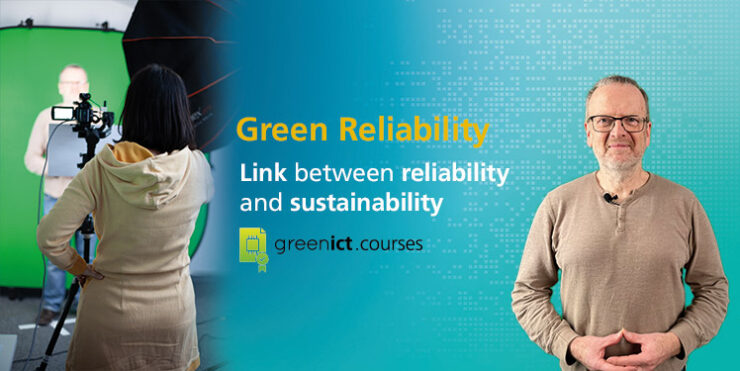
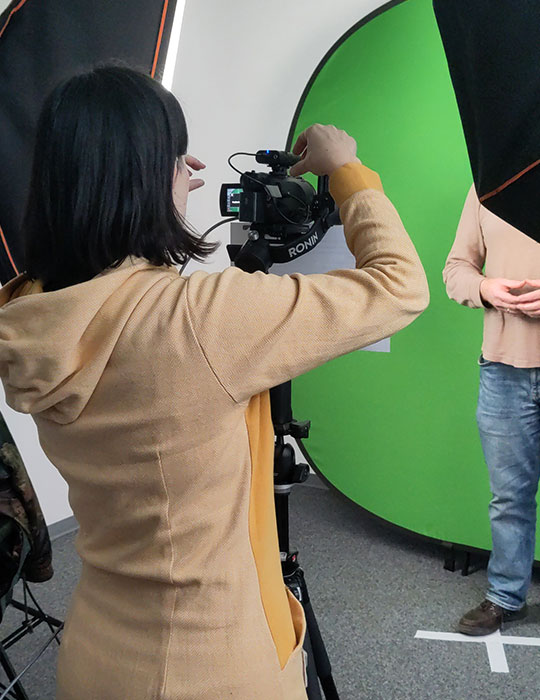
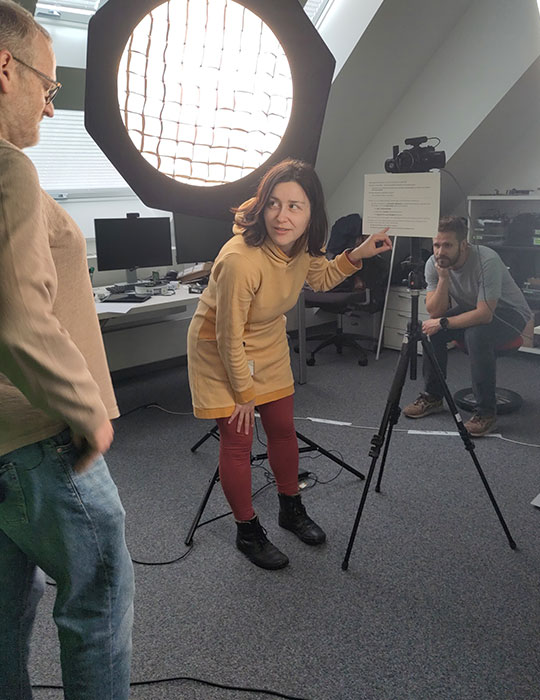
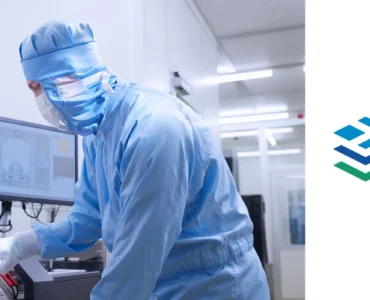
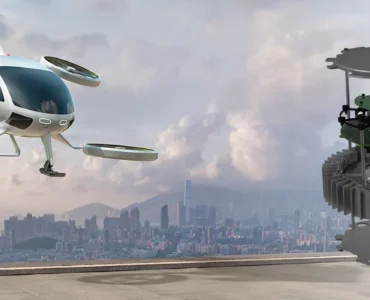
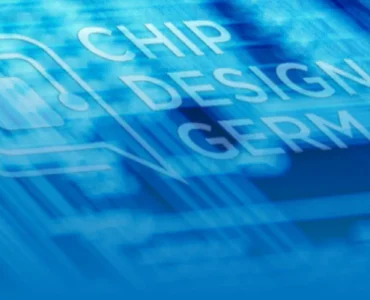
Add comment